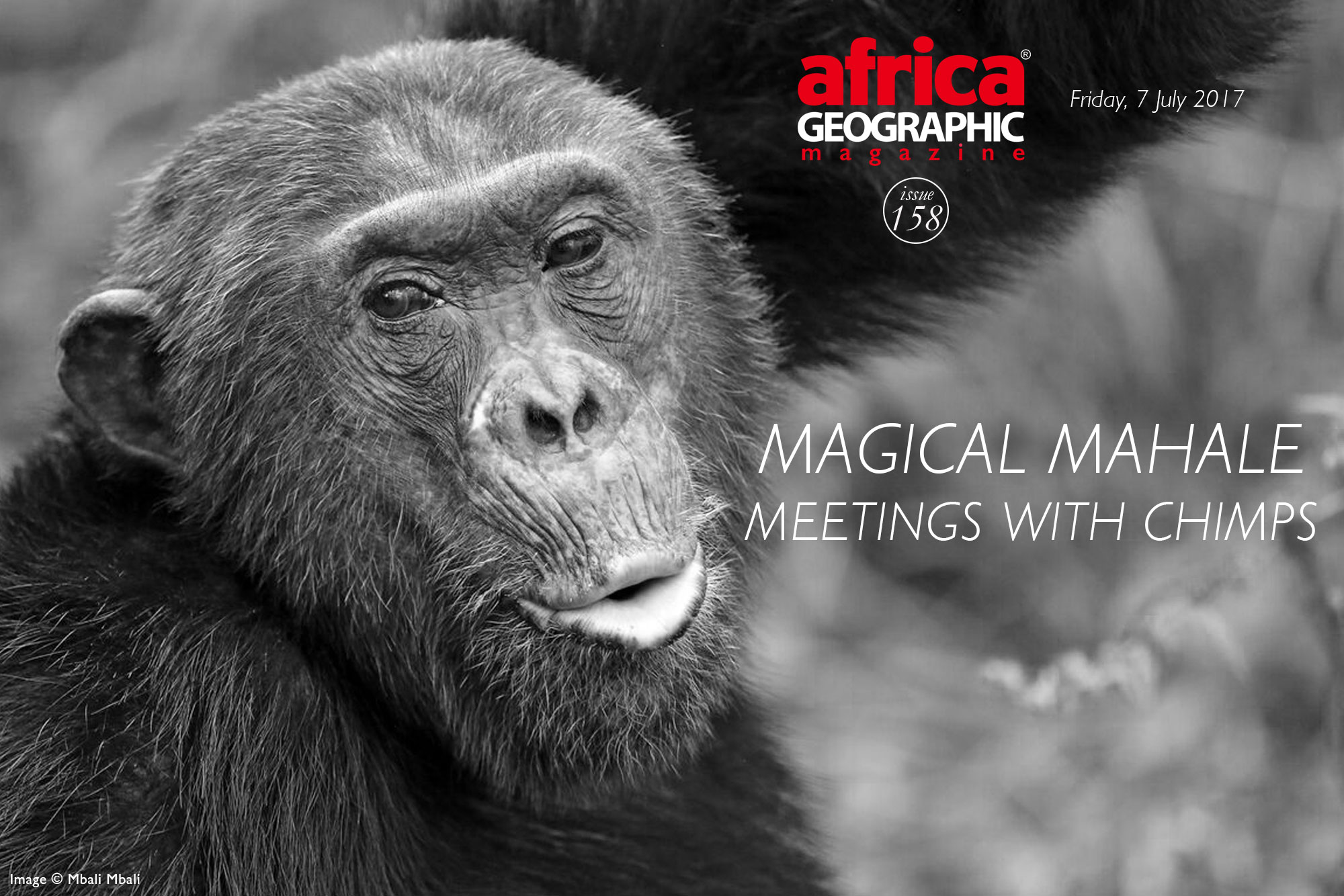
Chimpanzee tracking in Mahale Mountains National Park

The turquoise water teemed with tropical fish, palm trees swayed, and warm waves lapped at our toes on the sandy beach. We could easily have been on a beach in the Indian Ocean. But we were at Greystoke Mahale.
This lodge, inside Mahale Mountains National Park, Tanzania, is on the shores of Lake Tanganyika. It’s about halfway between the borders of Burundi and Zambia. Behind us, within hiking distance of the beach, loomed the foothills of the Mahale Mountains, covered in a mix of miombo woodland and rainforest.
Hidden beneath this canopy is a thriving population of wild chimpanzees.
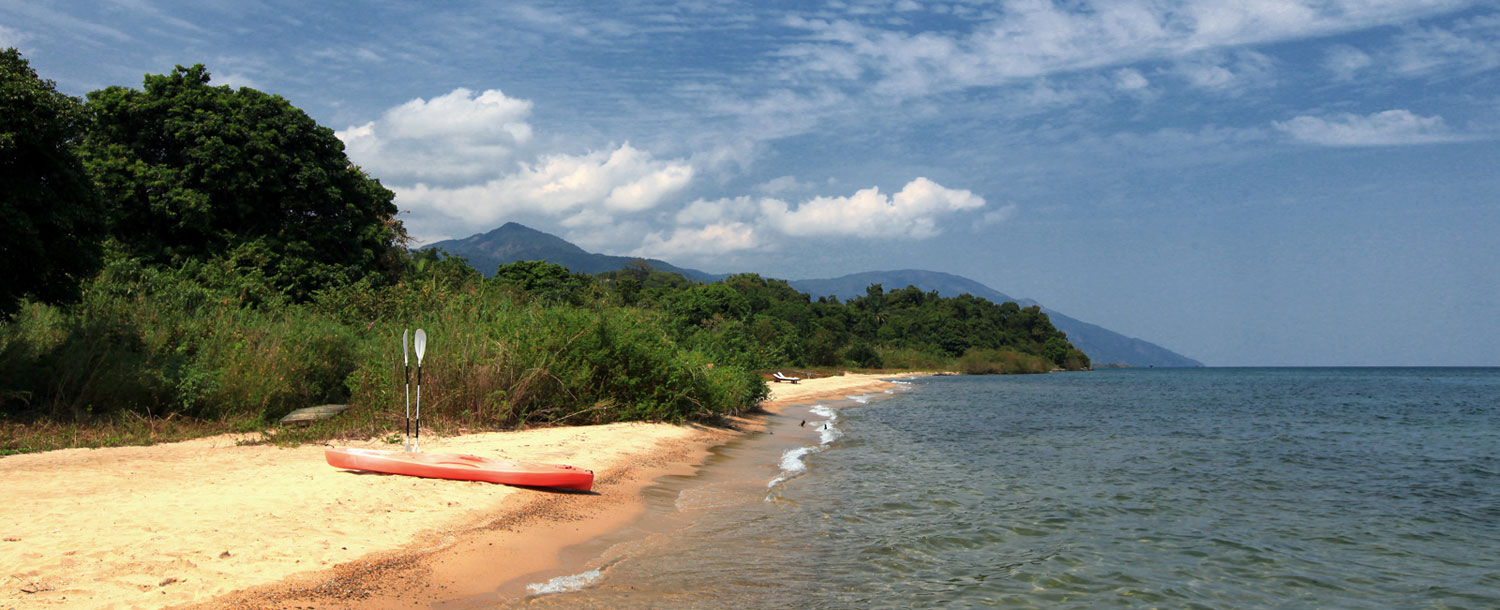
A journey worth taking
Mahale Mountains is one of Africa’s few national parks that can be experienced only on foot. There is no single road in the 1,613km² of the park. Add to this the fact that the only way in or out of Mahale is by boat, and you begin to get an idea of the true remoteness of the place.
For those searching for an entirely new wilderness experience, there’s little to compare with the excitement and beauty of this remote park. Mahale is a long way off the beaten path, but the lake, the beaches, the extraordinary forest and – of course – the chimpanzees make it a journey well worth taking.
The shoreline of Lake Tanganyika is an area of great beauty. The lake is part of the western Rift Valley and has several million years of history. It’s the longest lake in the world (673km) and the second deepest (1,470m at its deepest point). Lake Tanganyika holds a staggering 17 percent of the world’s fresh water.
The lake water at Mahale is crystal clear and filled with an incredible array of tropical fish. There are about 250 species of cichlids in Lake Tanganyika, 98 percent of which are endemic to the lake. Although there are crocodiles in many places along the shore, they’re rare at Greystoke, so we could snorkel in the shallows quite safely.
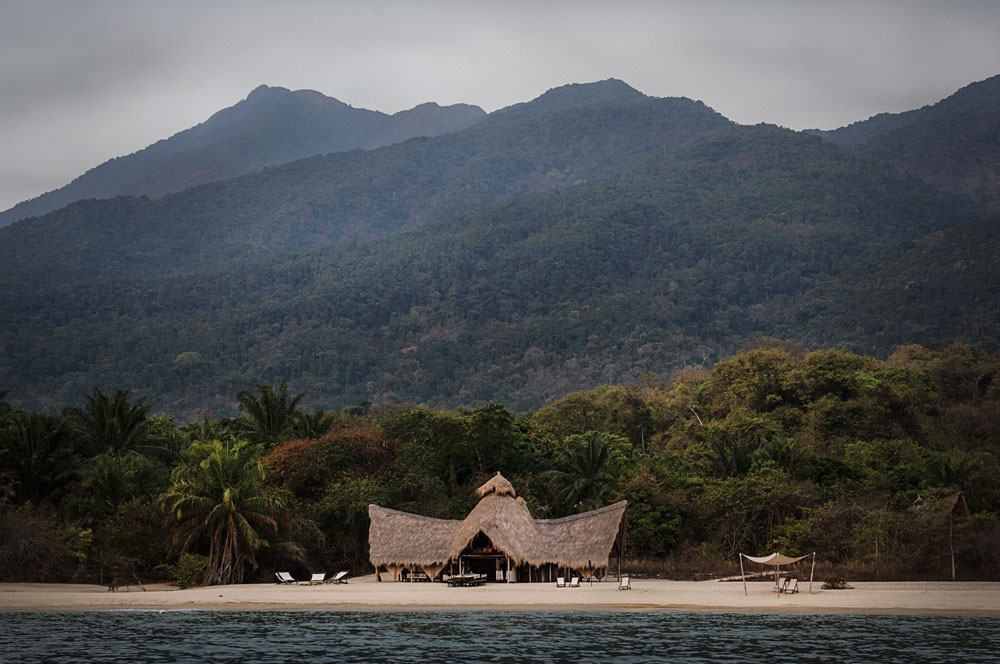
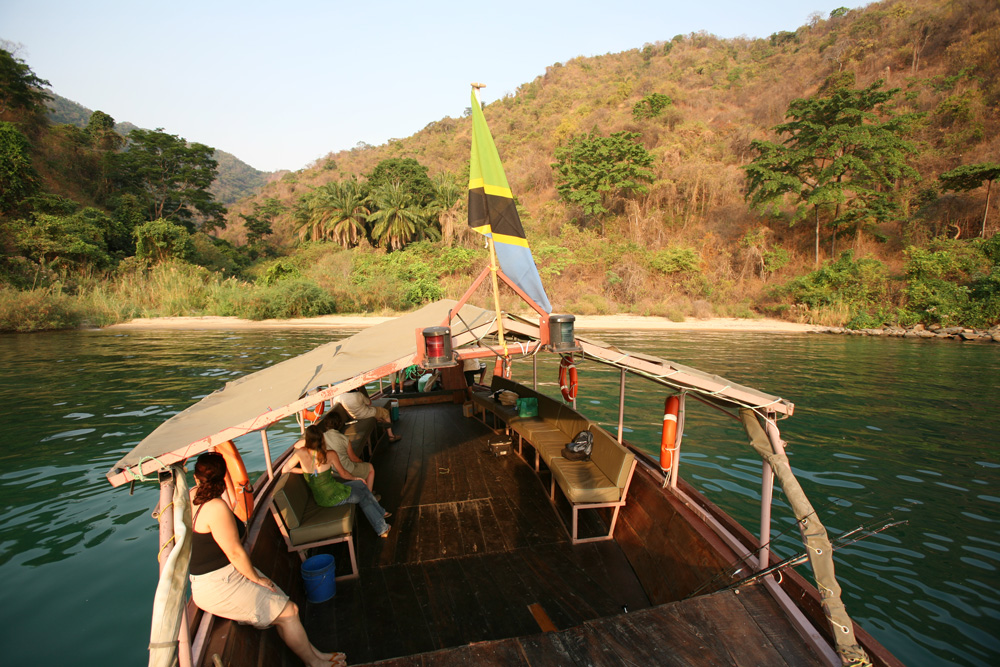
A haven for hundreds of chimps
However, we had come to the Mahale Mountains to see the chimpanzees, so we temporarily turned our backs on the lake and headed off into the hills. There are only two protected areas for chimpanzees in Tanzania. Gombe Stream National Park was made famous by researcher Jane Goodall. But Mahale is 50 times the size and infinitely more diverse.
The chimpanzee population in Mahale Mountains National Park is the world’s largest protected population of the eastern subspecies of chimpanzee (Pan troglodytes schweinfurthii). Thanks to the park’s size and remoteness, they are flourishing. Mahale has approximately 800 chimpanzees. However, only one group has been semi-habituated by humans and is regularly visited. This M group, of about 60 individuals, was the group we would look for.
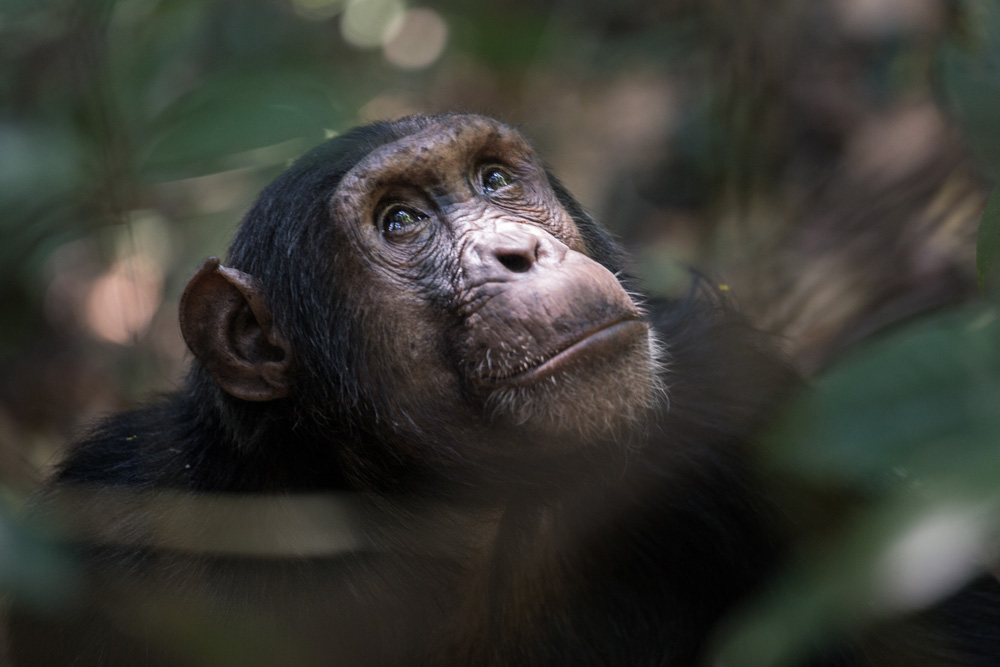
If trekking five to six hours a day up steep inclines in humid jungle conditions is not for you, think carefully before deciding to visit Mahale! M group’s territory is approximately 39km² and covers beaches, lowland forest, hills and valleys, much of which is impenetrable to the average human tracker. The seasons determine where the chimps will be found. Different fruits ripen in different locations at different times. So, knowing what’s on the menu is essential.
Traditionally, the Batongwe and Holoholo people lived in the Mahale Mountains. They’d been there for hundreds – possibly thousands – of years and were highly attuned to the natural environment. They lived with minimal impact on the ecology and coexisted peacefully with the chimpanzees. They regarded them as ancestors and never hunted them for bushmeat.
When the Mahale Mountains National Park was established in 1985, about 35,000 people were relocated from the mountains into surrounding villages. In the formerly inhabited parts of Mahale, you can see the exotic and cultivated plants they left behind: palm trees (for oil), mangos, guavas and lemons. These trees form part of the diet of both the chimpanzees and some of the park’s other primates, including yellow baboons, vervet, red-tailed, and colobus monkeys (both the red and Angolan black-and-white colobus).
To prevent too much competition between the rapidly growing baboon population and the chimpanzees, the exotic trees weren’t eradicated when the people were moved away. Since the fruit trees are found mainly along the shoreline, chimpanzees regularly come down from the hills and dine right by the camps when the fruit is ripe.
On foot through the forests
Unfortunately, exotic fruits were not on M group’s shopping list during our time in Mahale. Consequently, day one was quite a long slog. Two hours of trekking uphill with Greystoke Mahale’s terrific trio, Mwiga, Mathius and Butati, had the group dripping with sweat. Some were wondering what they had signed up for, and one declared it was so humid he had developed a severe case of swamp ass.
But, nothing can adequately convey the adrenaline rush that kicked in when we first heard the calls of the chimpanzees. Heat, distance, aching legs, swampy asses – all was forgotten as the shrill cries echoed through the forest canopy. Redoubling our speed, with energy miraculously restored, we hurried on through the dense vegetation. Suddenly, there they were.

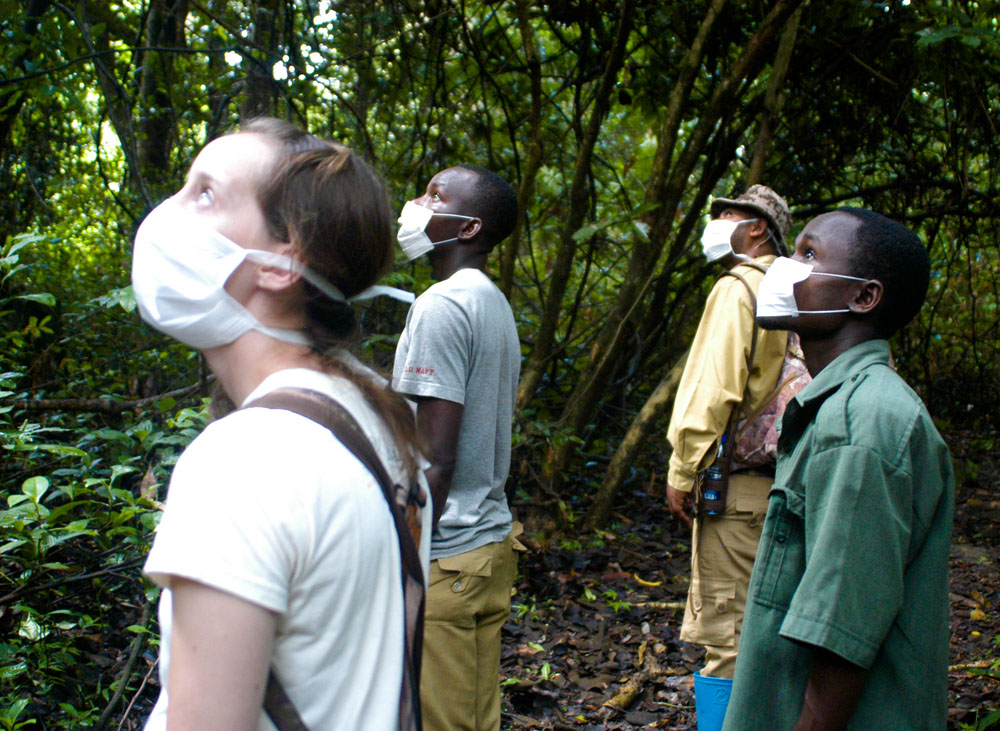
Our first sighting was of just three chimps: a mother, her baby and another female. We’d been too slow to catch the rest of the group. They’d been hunting red colobus monkeys and, after a successful hunt, had descended at speed back down the mountain we’d worked so hard to climb.
Fortunately, this group of three had remained, and we could sit and spend time watching them. Mum was eating the remains of the monkey carcass, and the baby was clearly bored. He swung in the trees, hanging first by one arm, then the other. He swung upside down, performing aerial somersaults, and occasionally reached out to touch the tail of the red colobus monkey that his mother was eating – a somewhat macabre choice of toy.

Spectators at a primal drama
After this tantalising taste, we didn’t see any chimpanzees for a few days. We swam, fished, snorkelled and kayaked while we waited for the trackers to find the elusive M group again. On day four, we finally got word that the trackers had located them. So, off we set up the mountains again.
This time, we knew what to expect, although it didn’t make it any easier. Again, we heard the spine-chilling screams and cries of the chimpanzees as they hunted another red colobus monkey. We listened to the whoops of excitement when the hunt was successful. This time, we reached them in time to witness group politics playing out.
The alpha male took possession of the kill, dragging the bedraggled corpse through the forest and across the riverbed. The others followed in hot pursuit. Some begged, others attempted to ingratiate themselves with him, and yet more pretended to be indifferent. Their tactics depended on their hierarchy in the tribe.

The alpha male had difficulty deciding whether to eat the kill or court one of the in-season females. He wanted to have his cake and eat it too, and this was proving a dilemma.
Time close to the chimps is limited to an hour to minimise interference and disturbance. But for us, time seemed to stand still. It felt like we had been with them both for two minutes and two hours. The adrenaline and excitement of the chase, followed by plenty of time to observe the group dynamics and get so close to so many different individuals, was simply amazing.
The secret life of chimpanzees
The researchers studying wild chimpanzees in Mahale since the 1960s depended on habituating the animals for much of their research. Initially, this was achieved by feeding them sugarcane and bananas. But, once reasonable levels of habituation were established, feeding was reduced. By 1987, it had been completely abandoned.
Now, researchers follow the chimpanzees as they range freely in the forest, monitoring their activities and social structure. Field research has also shed light on how our closest genetic relatives can cure some of their afflictions in the wild.
Chimps in Mahale use medicinal plants to treat a variety of ailments. For example, chimpanzees have been witnessed eating two different plants to treat themselves for roundworm. One plant contains a chemical that kills the worms. The other is a fibrous leaf that the chimps fold up accordion-style, swallow and excrete whole, physically scraping the worms from their intestines.

While chimpanzees are adept at treating several ailments with plant medicines, they aren’t immune to human disease, which has proven fatal in some cases. A few years ago, flu was transmitted from humans to chimpanzees, and a large number of the community died as a result. Now, anyone anywhere near the chimps must wear a surgical mask and refrain from eating or drinking. If unwell, you may not visit them at all.
You’re also supposed to keep a minimum distance of 10 metres from the chimpanzees at all times. However, this is sometimes proved difficult. M group was always on the move and showed a complete lack of interest in us, regularly passing and sitting very close by. One of our group was given a resounding thump by Christmas, one of the senior males, as he ran past her. Apparently, he was trying to reinforce his position in the clan. She had quite a bruise as a souvenir the next day. In another instance, Teddy, another male, quite literally sat on the foot of one of our group. Teddy was so close that the man couldn’t even focus his camera to photograph his new friend.
We’d been warned not to be startled or to run away if charged at by any of the chimps. While this was good advice, in theory, it wasn’t as easy as it sounds. Chimpanzees are about five times stronger than humans, so holding my ground as six young males came charging down the hill, whooping, screaming, chasing one another – and coming close enough to me that the hair on their bodies brushed against my bare legs – took considerable will power.
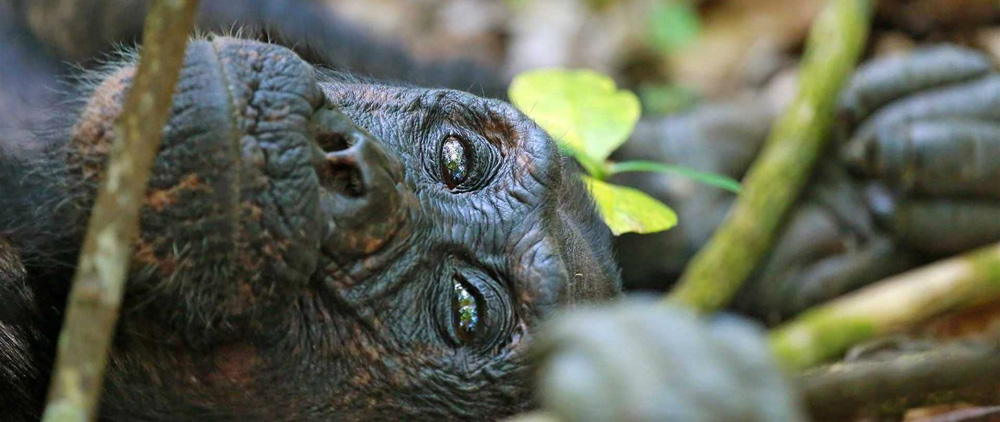
Up close and camera-free
Descending from their night nests in the morning, chimpanzees feed on fruits, leaves, buds and blossoms. Once their appetites are sated, they become vocal. This is the best time to locate them. Rama, our knowledgeable guide at Kungwe Beach Lodge, informed us that we could expect to hear them at 10 am. Sure enough, we heard the first calls at 10:05.
Chimps are amongst the noisiest wild animals, which certainly made finding them in the dense undergrowth a little bit easier. We found a group of around 15 individuals in dense foliage. It was too dark, and the space was too confined for photography, but this was actually a good thing.
Putting aside cameras gave us time to focus on the behaviour and mannerisms of various individuals. We watched an infant playing with his elder sister. We laughed as we saw him practising being a grown-up, stamping the ground and doing mini displays with puny twigs and leaves. Then, some of the older males arrived, and we saw another side to them as they tickled and patted the infant in passing before settling down to groom each other.
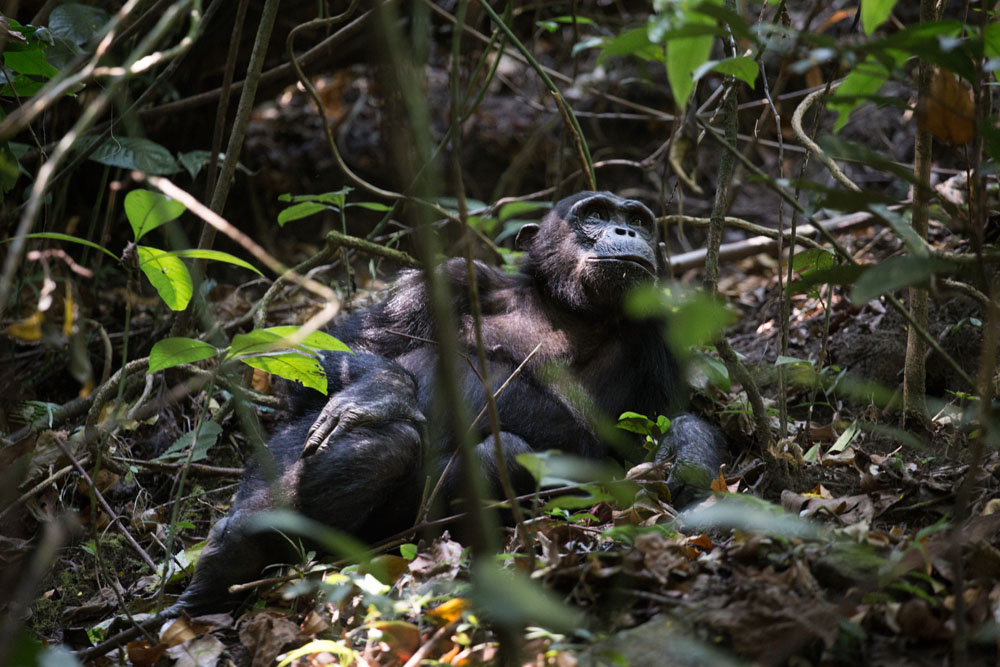
Another day, another five hours of trekking. We had started on a visible path, but as soon as we heard the chimps vocalising – right on time at 10:01 – we veered sharply off the trail and spent at least two hours bush-bashing through decidedly prickly vines and thorny vegetation. Samjee, another of our guides, took the lead and got busy with a machete, hacking a trail through the undergrowth.
We spent large sections of that day on our hands and knees, crawling under bushes and scrabbling through dense undergrowth. We even used vines like ropes where there was no other possible route. When we first heard the vocalisations of the chimpanzees that morning, they were celebrating another successful monkey hunt. But, by the time we reached them, there was no sign of the meat.
Many of the group were high up in the trees, and we only caught glimpses of them. So, we sat down and focused on the ten or so individuals on the ground nearby. Chimpanzees use a complicated system of sounds to communicate with one another. They accompany this with much touching, hand-holding, grooming, and even kissing. This was our last day in Mahale, and we enjoyed observing the group relaxing in the shadows.

A pair of surprise sightings
When it was time to leave, we reluctantly returned to the lodge. But Mahale hadn’t finished with us yet. Halfway back to camp, we came across a lone female chimpanzee and her baby in a tree beside the trail. We enjoyed another half an hour watching them.
The baby bounced up and down on branches, trying his best to intimidate us. Then, like a child with ADHD losing concentration, he performed some daredevil midair stunts. Suddenly remembering us again, he’d quickly do some more practice displaying. We could have watched him for hours. We returned to camp bruised, battered, and bleeding – but very, very happy.

Mondays and Thursdays are rest days for the chimps; no visitors go trekking on those days. This coincides with the twice-weekly flights in and out of the Mahale airstrip (a 90-minute boat ride away from the lodges). So, we spent our last morning on the lake in a wooden dhow.
It was cool, with no hint of the heat and humidity to come later in the day. While there are lions, zebras, giraffes, roans, sables, and hartebeest on the other side of the mountains, we, like most people, wouldn’t get that far.
However, we did see hippos, palm-nut vultures, and violet-backed starlings (new to us). And then—to round off a perfect morning—a leopard on the beach. He sat calmly on the sand, watching us pass by, looking like a cat who had just lapped from the gigantic saucer that is Lake Tanganyika.
Where to stay in Mahale
Greystoke Mahale
Greystoke Mahale sits on a pristine, white sandy beach overlooking the turquoise water of Lake Tanganyika, with the forested slopes of the Mahale Mountains rising behind.
It has just six en-suite wood and thatch bandas set on the forest’s edge. The rooms are tucked back into the forest line so that your only view is of the beach and the lake beyond. They’re also made almost entirely from sustainable materials sourced on Lake Tanganyika.
The central mess is the only structure on the beach, and days start there, eating breakfast while waiting to hear news of the chimps. Evenings end with sundowners on the rocks of the headland, where drinks are served around the lamp-lit bar.
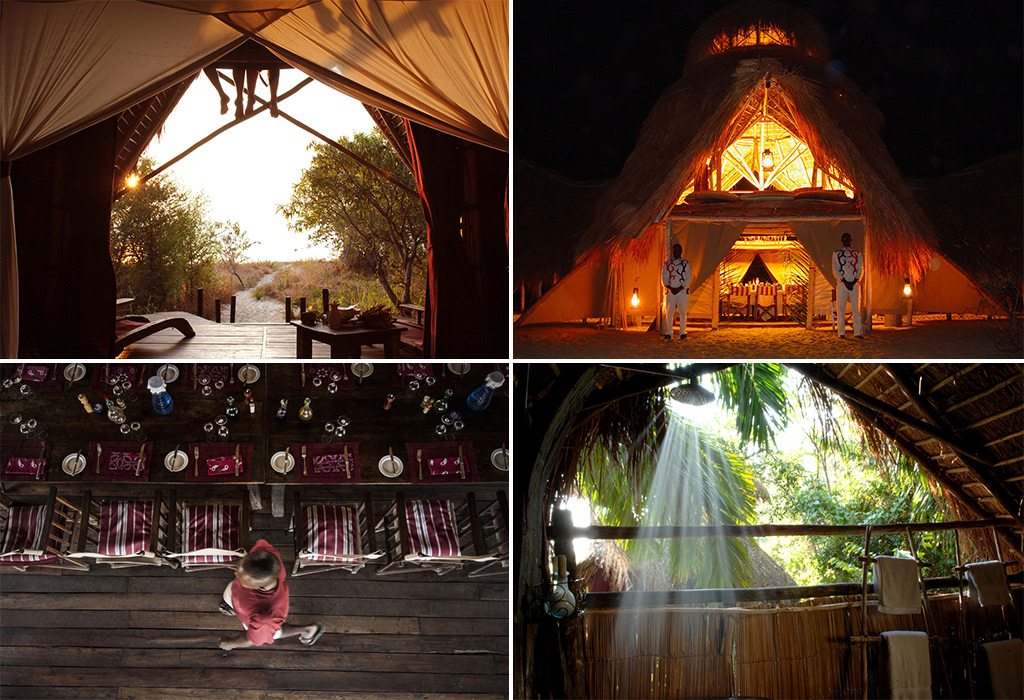
Kungwe Beach Lodge
Kungwe Beach Lodge sits on a stretch of secluded golden beach surrounded by the dramatic mountain range and crystal clear waters of Lake Tanganyika.
On a gentle boat safari down the lake, you may encounter crocodiles, hippos and otters and an abundance of birdlife. Test your skills against the local methods of freshwater fishing and explore the lake on a kayak, or spend the day relaxing on the beach.
Enjoy a sundowner around a crackling fire in the evening while the sun slowly dips down over the mountains. This romantic getaway is the perfect blend of comfort and luxury.

About the Author
 Born and raised in Sydney, Australia, before moving to Africa at the age of 21, Sarah Kingdom is a mountain guide, traveller, and mother of two. When not climbing, she also owns and operates a 3,000-hectare cattle ranch in central Zambia.
Born and raised in Sydney, Australia, before moving to Africa at the age of 21, Sarah Kingdom is a mountain guide, traveller, and mother of two. When not climbing, she also owns and operates a 3,000-hectare cattle ranch in central Zambia.
She guides and runs trips regularly in India, Nepal, Tibet, Russia, Turkey, and Uganda, and takes travellers up Tanzania’s Mount Kilimanjaro numerous times a year.
To comment on this story: Login (or sign up) to our app here - it's a troll-free safe place 🙂.![]()




